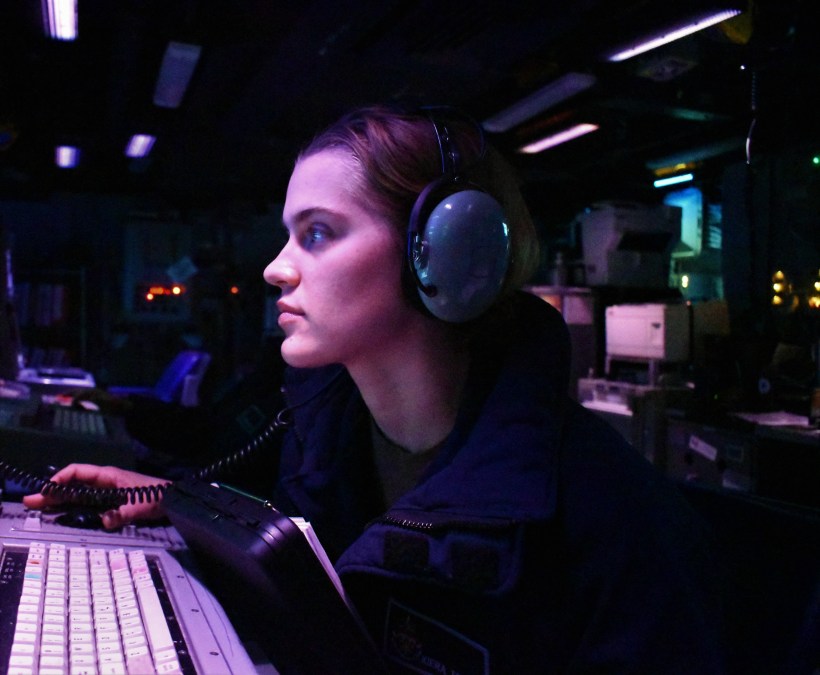Navy moves to 2nd phase of information warfare submarine pilot

Editors note: This story has been updated to reflect two, not three submarines involved in the second phase based on information previously provided by the Navy.
SAN DIEGO, Calif. — The Navy is moving to the second phase of a pilot effort to integrate information warfare personnel and capabilities aboard submarines.
Previously, the Navy had placed an information warfare professional and two cryptologic technicians on two subs: USS New Mexico and USS Washington.
According to a spokesperson from Naval Information Forces, working with Submarine Forces and based upon feedback and lessons learned from the first phase, the next phase will put an information professional officer and two cryptologic technicians (technical) on two other east coast submarines, including the USS Delaware and USS California.
“The intent of this program is to pilot robust IW integration and employment on these platforms to meet the growing demand for IW expertise in the Fleet,” the spokesperson told DefenseScoop.
This pilot to further integrate information warfare into fleet operations, follows the decision years ago to make information warfare commanders permanent fixtures within carrier strike groups.
In recent years, adversaries have sought to exploit the information environment through disinformation, misinformation, information ops and other activities as a means of undermining U.S. and allied interests without having to confront them in direct military conflict.
The Department of Defense has sought to play catch-up of sorts, releasing updates to doctrine and strategy — and the services themselves issuing their own guidance within the information realm.
Over the last few years, officials across the joint services and top leadership positions in the DOD have vowed to bolster information warfare capabilities and forces. At the WEST conference last week, Adm. Samuel Paparo — the Navy’s Pacific Fleet commander who’s been nominated to lead all U.S. military forces in the region — asserted that the military is at the dawn of an information revolution.
When the initial notion of an information warfare commander in the Navy came about, there wasn’t even a billet for it.
“We told the SWO commander we’re going to give you one, but we need a billet … We gave him one. That IWC completed, came back and they said we don’t have a billet yet. So, at the time the commander was like, ‘Well, I don’t know if we can continue sustaining this,’” Capt. Kelvin McGhee said at the conference, referencing his prior experience as an executive assistant at NAVIFOR when the concept emerged. “Because of the breadth of knowledge that they brought and how phenomenal they did and the information that they provided them to do their mission, we got told, ‘We will find you an IWC to go back to an [Amphibious Readiness Group].’”
Others noted that this is an important investment the Navy is making from a fleet-level perspective.
“I think one of the important things that you might want to take away … is that the information warfare community investing in information warfare commanders, is putting an integrator at the point of decision-making. For a very long time in the fleet, that integration didn’t exist at that fleet level,” Capt. Christi Montgomery, the information warfare commander at Carrier Strike Group 12, part of Second Fleet, which operates in the North Atlantic, said.
“Now, through the work of NAVIFOR, through the work of the Fleet Forces Command and [Pacific Fleet], the directing that sort of integration at the [Maritime Operations Center] level … you have a nice continuity of understanding of information warfare across the continuum from what our shipmates are supporting us ashore to the MOC, to the strike group or the amphibious ready group level, so that there’s a common language, a common understanding, a common integration piece that’s going across,” Montgomery added.
These information warfare commanders have provided continued value throughout the years, according to officials.
“My observation of IWCs is that they’re extremely valued by their strike group commanders. We see at the end of the deployments, the IW commanders are coming in with where their opportunities and challenges are, and their strike group commanders are right there with them,” Elizabeth Nashold, deputy commander of Naval Information Forces, told reporters at the conference. “We’ve seen the IWC role mature over the last few years.”



